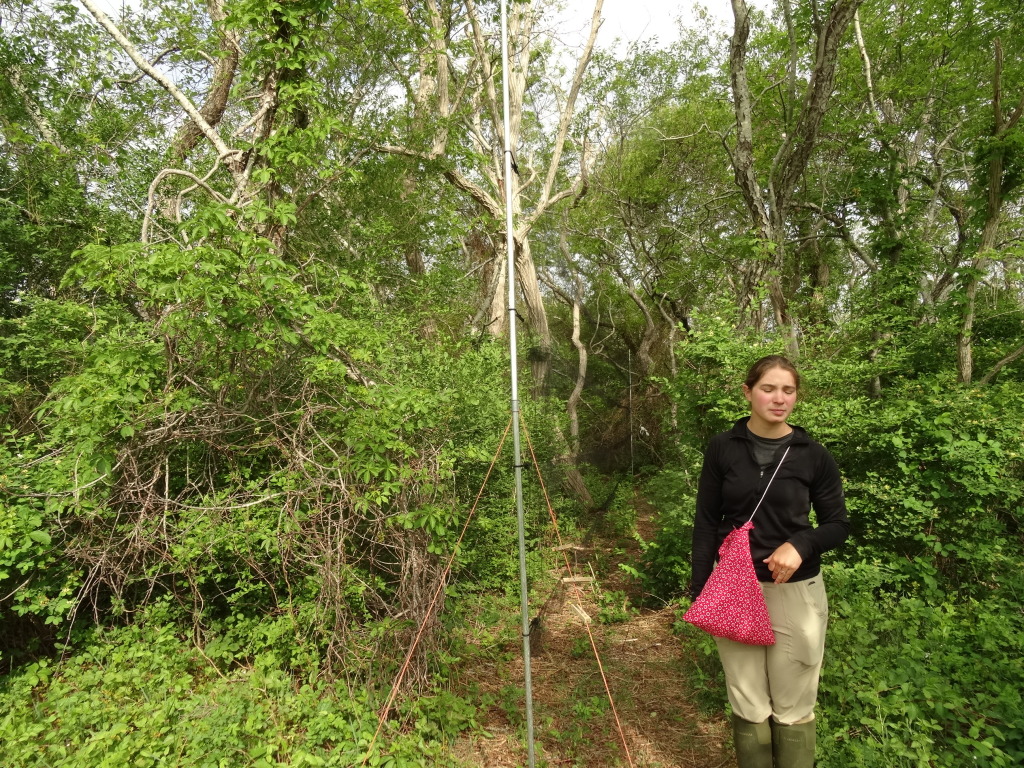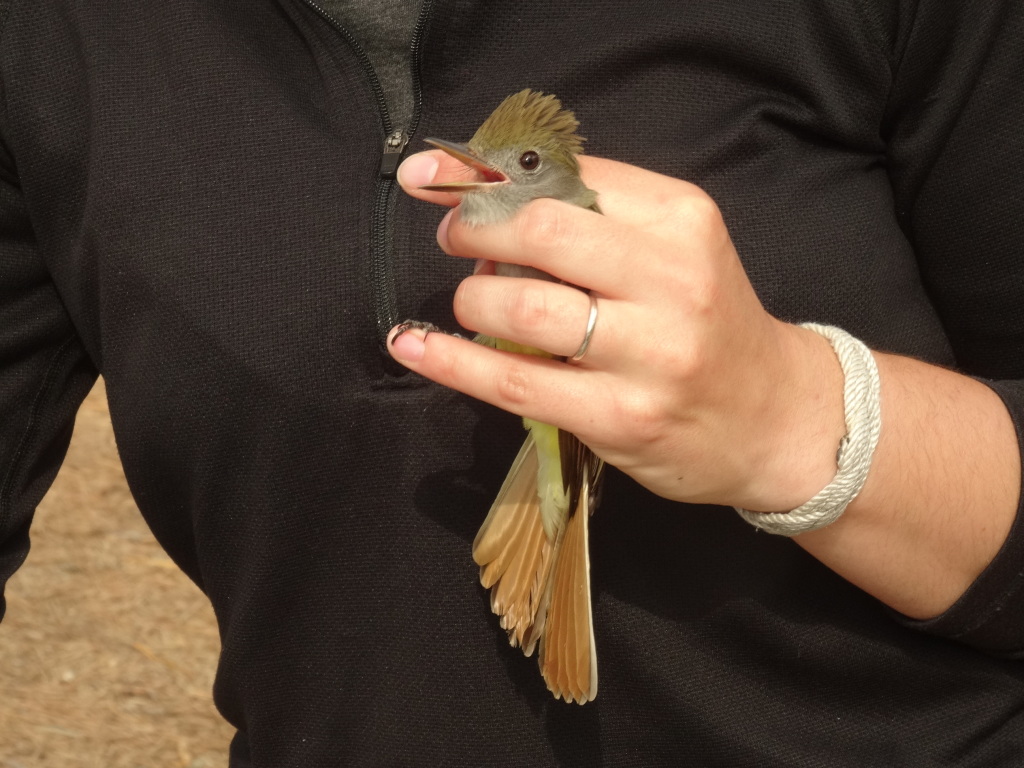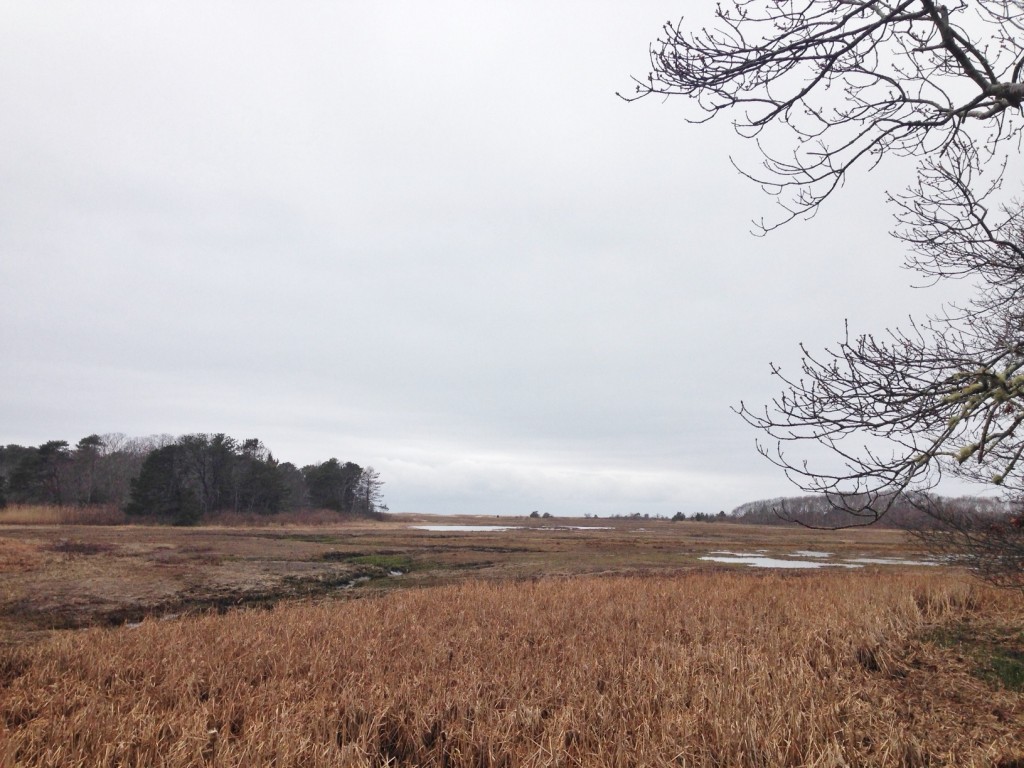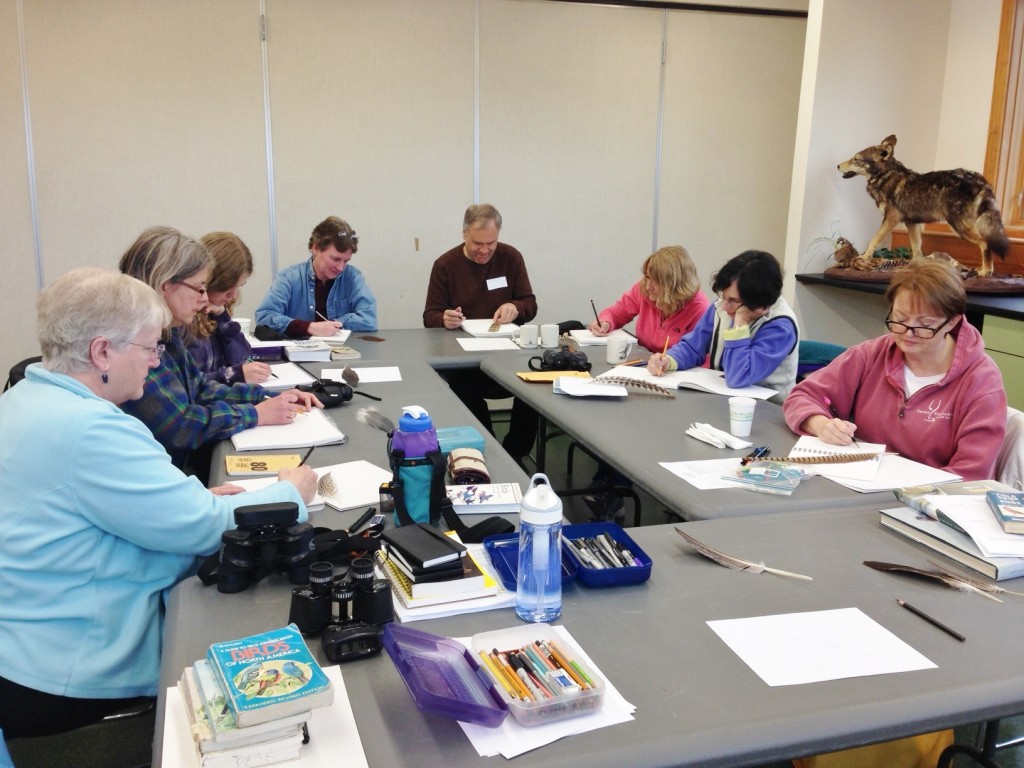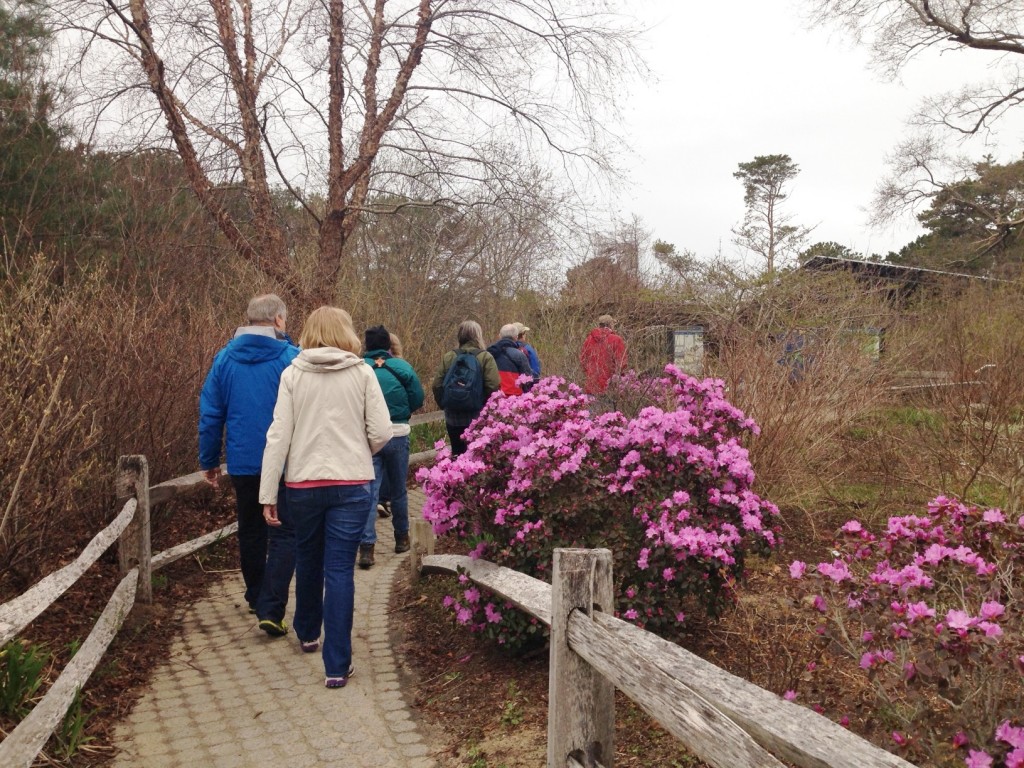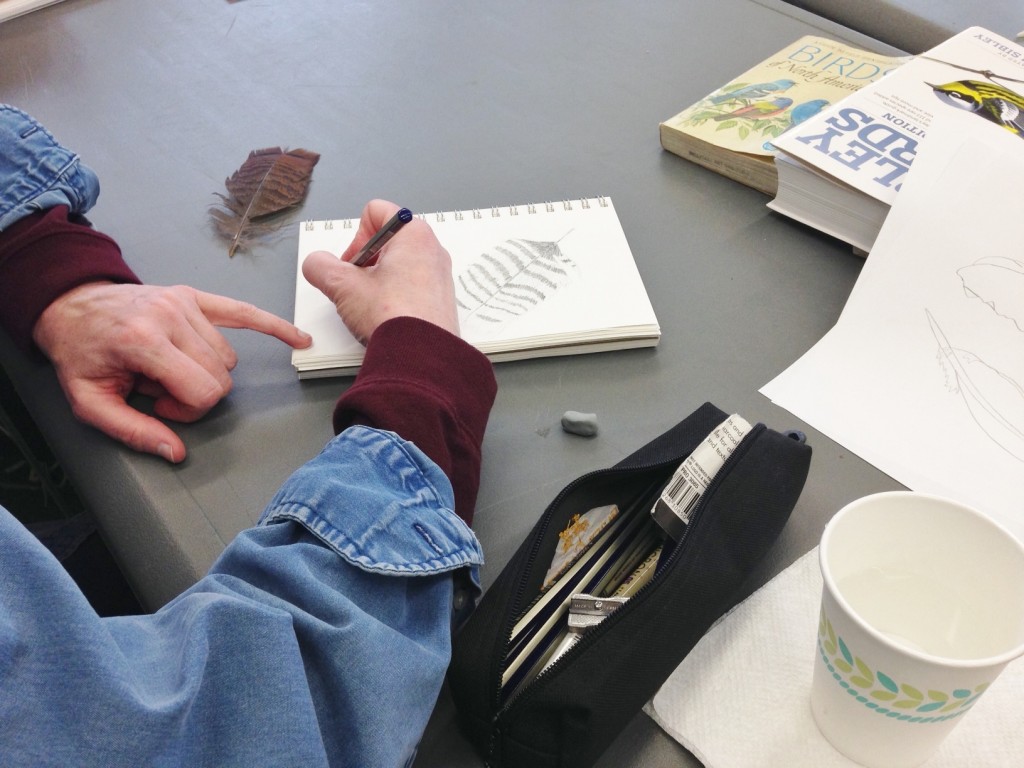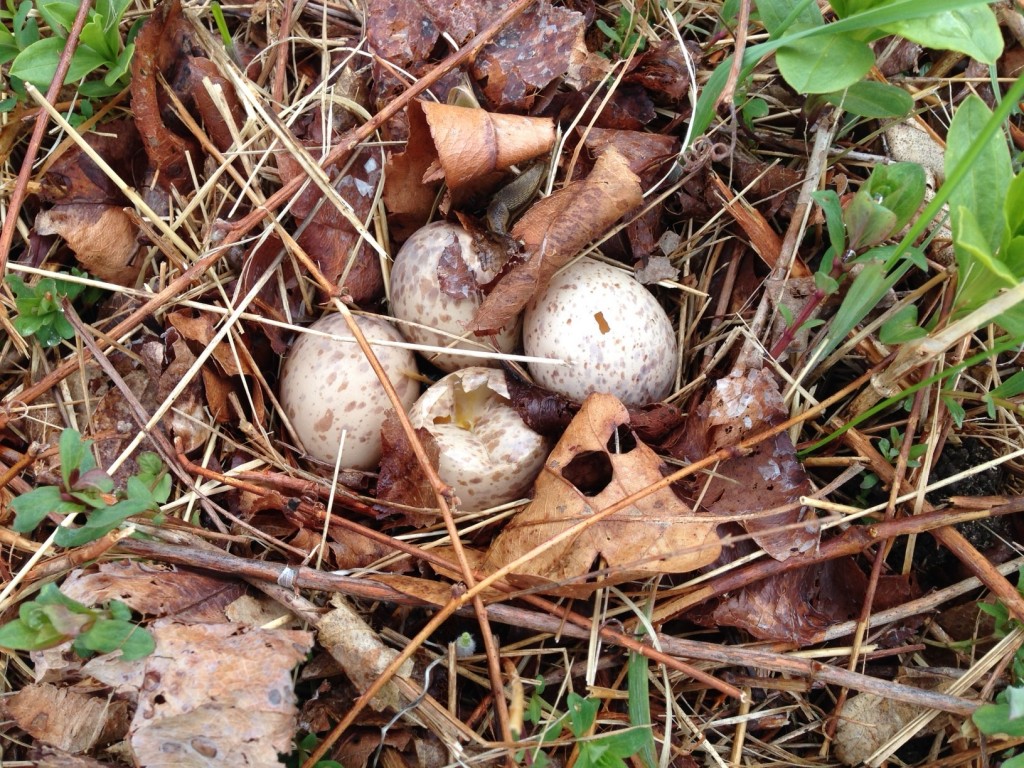Oops, I’ve been busy and I have not been updating here. I’ve been working with kids in the woods, at the pond and at the salt marsh. I’ve been drawing and painting, catching frogs and writing.
One of the coolest things I did over the last few weeks was attend a bird banding demonstration at the Wellfleet Bay Wildlife Sanctuary.
The table was all set up with the necessary tools for weighing, measuring and recording.
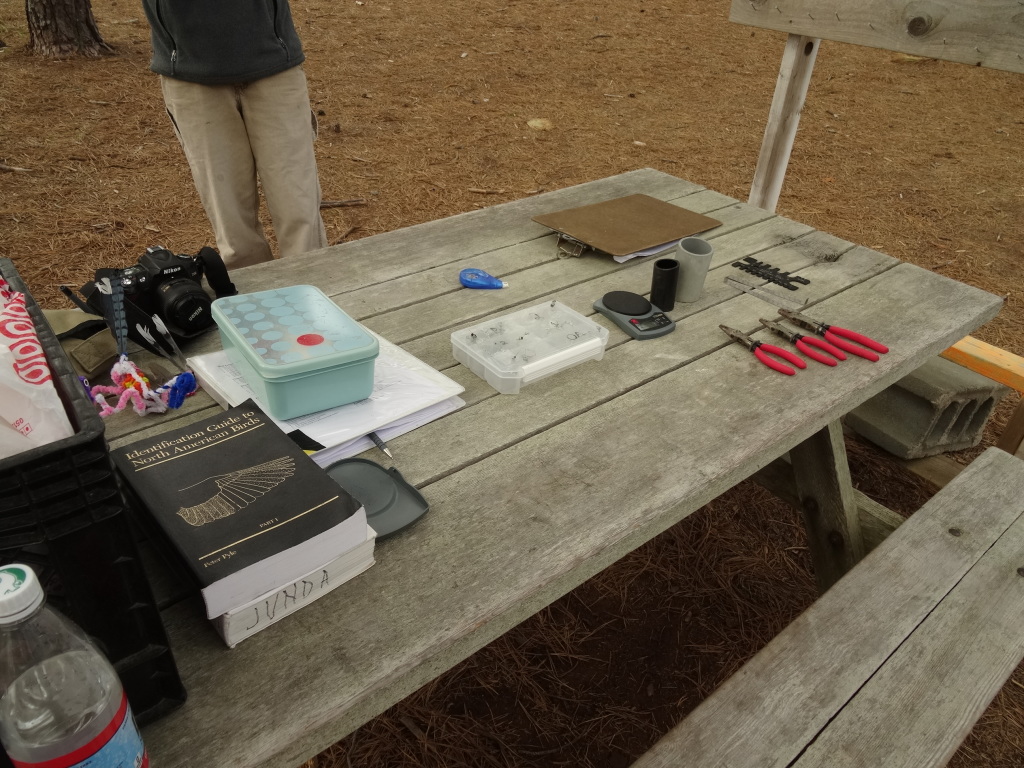 The next step was to check the mist nets which had been set up in areas migratory birds fly through but which also had some protection.
The next step was to check the mist nets which had been set up in areas migratory birds fly through but which also had some protection.
The little bag holds other bags which can gently hold the birds found and carefully removed from the nets.
Look what we found! A great crested flycatcher! These guys are feisty and vocal in the wild and they are when captured as well.
Feathers are examined to determine condition and age of the bird.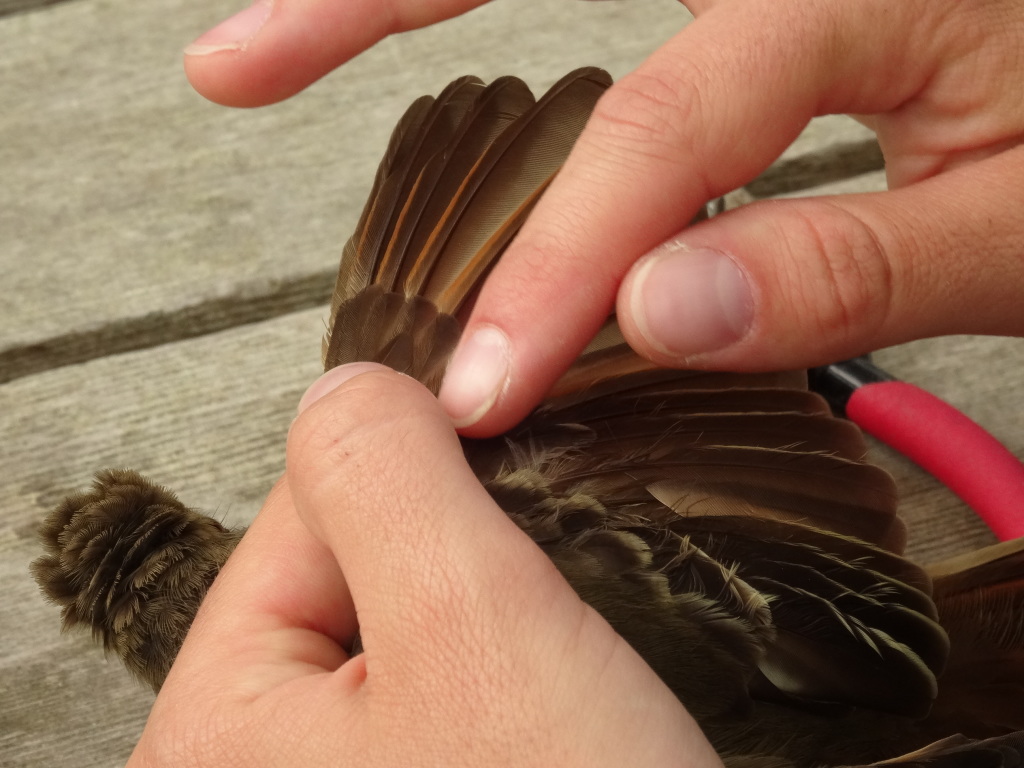 By blowing on the belly of the bird the bander can tell if the bird has a bare brood patch, meaning it is sitting on eggs. In this species both male and female can have brood patches so sex was not determined.
By blowing on the belly of the bird the bander can tell if the bird has a bare brood patch, meaning it is sitting on eggs. In this species both male and female can have brood patches so sex was not determined.
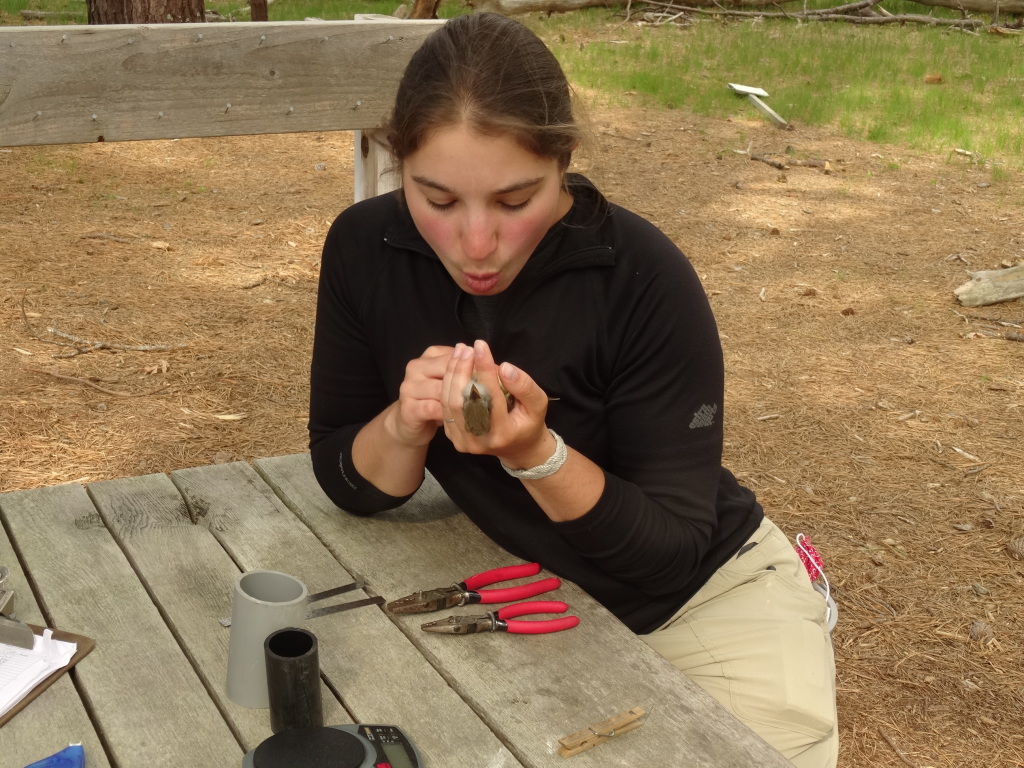 The bird is then weighed. It looks sort of tough but really, the bird is quieted by the darkness and the fact that it can’t move. It is only in the tube for a matter of seconds.
The bird is then weighed. It looks sort of tough but really, the bird is quieted by the darkness and the fact that it can’t move. It is only in the tube for a matter of seconds.
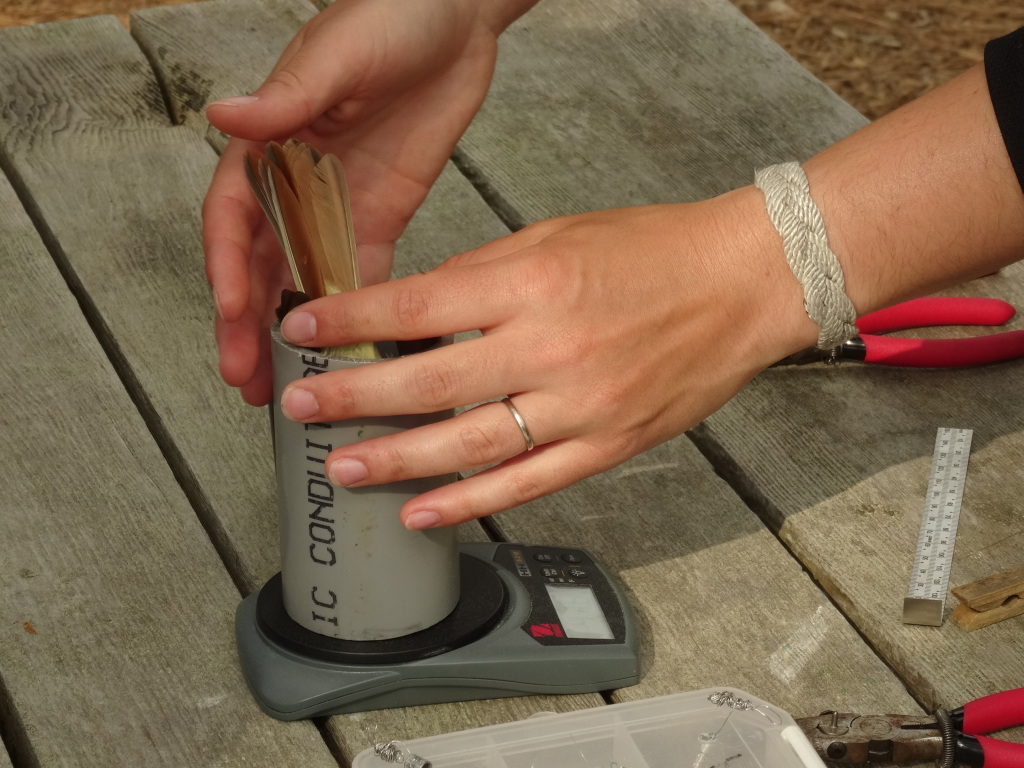
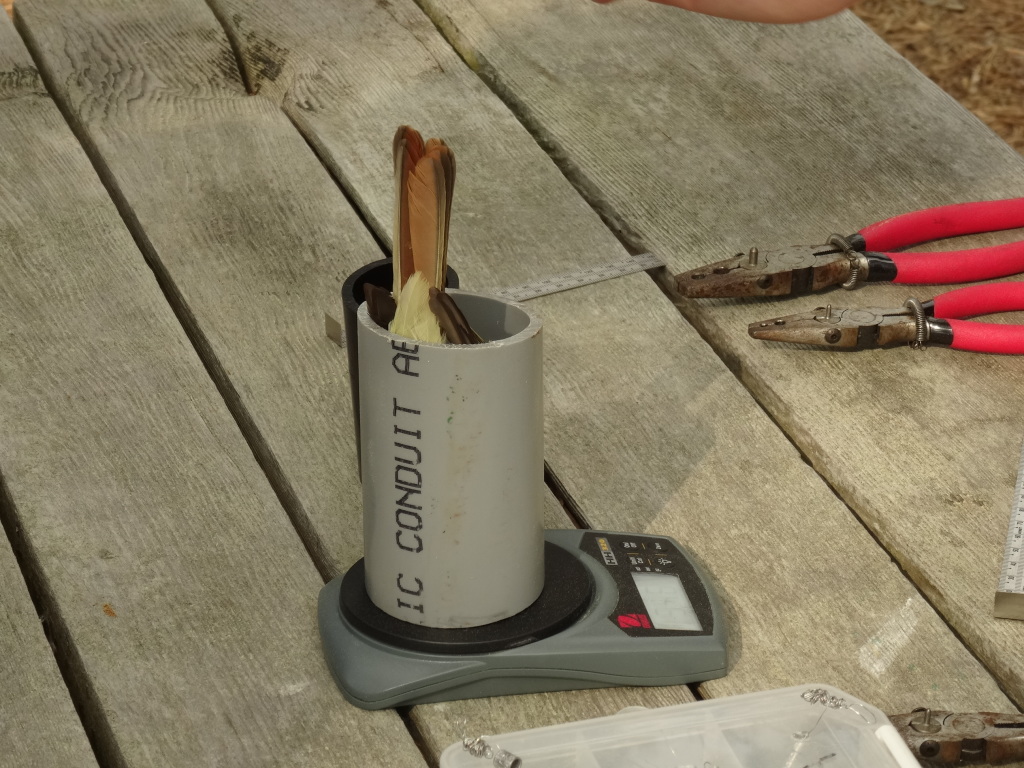 After all that the band is affixed to the leg and all info is recorded.
After all that the band is affixed to the leg and all info is recorded.
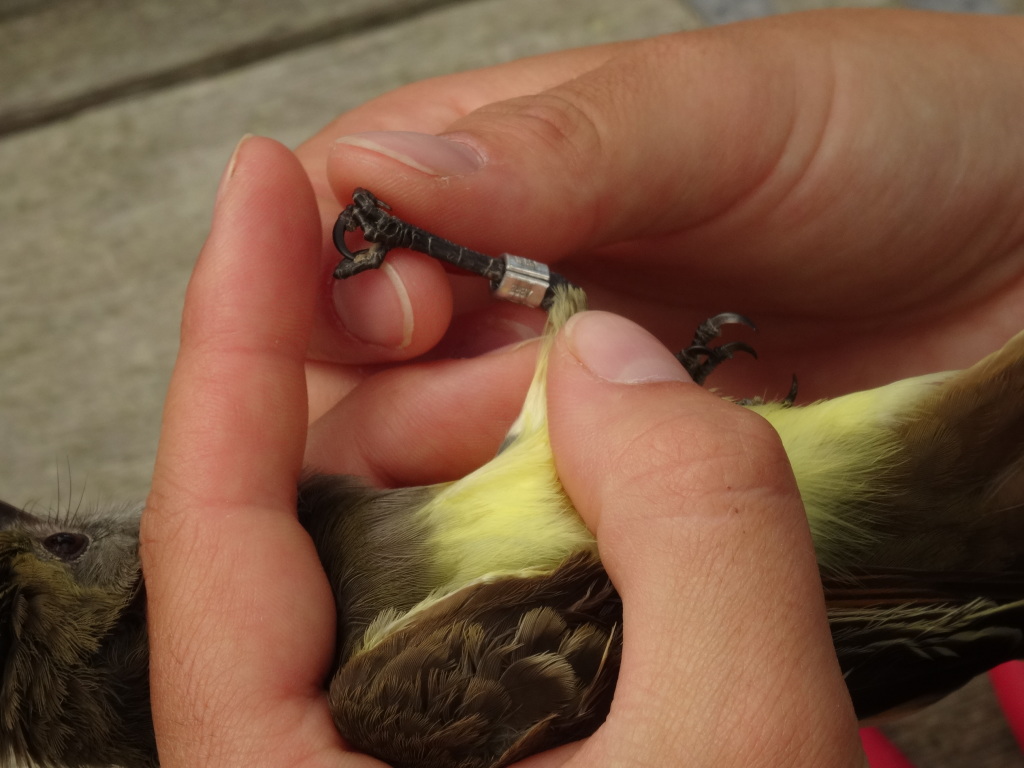 A moment is taken to admire and thank the bird for its cooperation
A moment is taken to admire and thank the bird for its cooperation
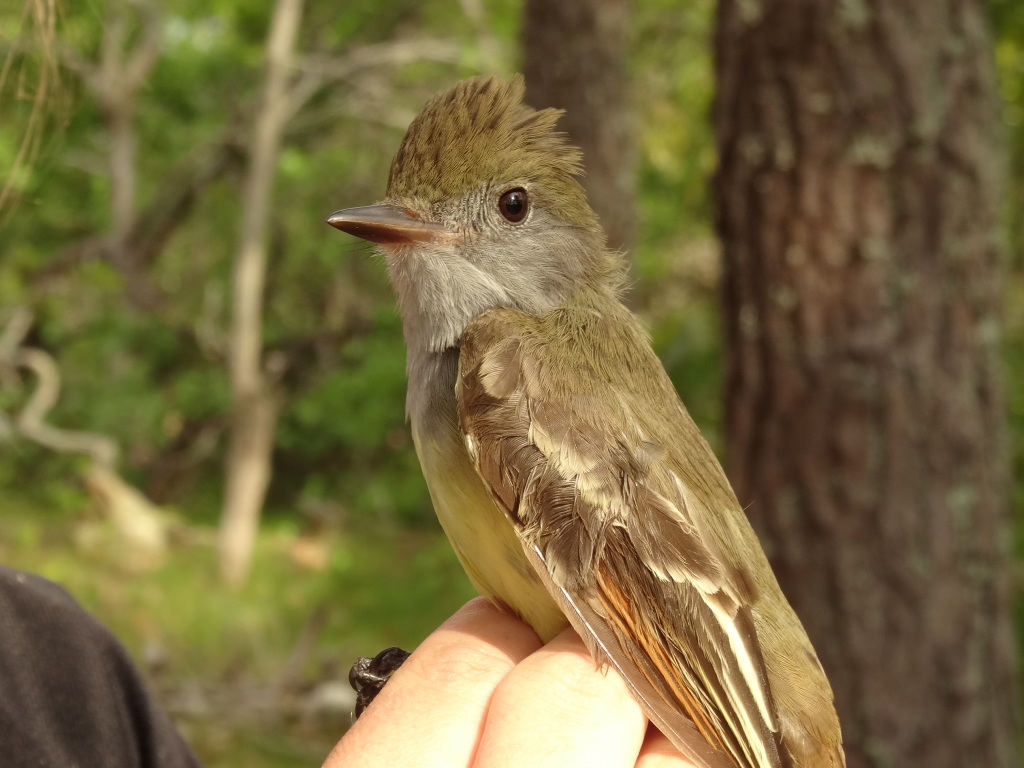 and then it is released. When releasing the birds, they are held close to the ground which helps them orient themselves.
and then it is released. When releasing the birds, they are held close to the ground which helps them orient themselves.
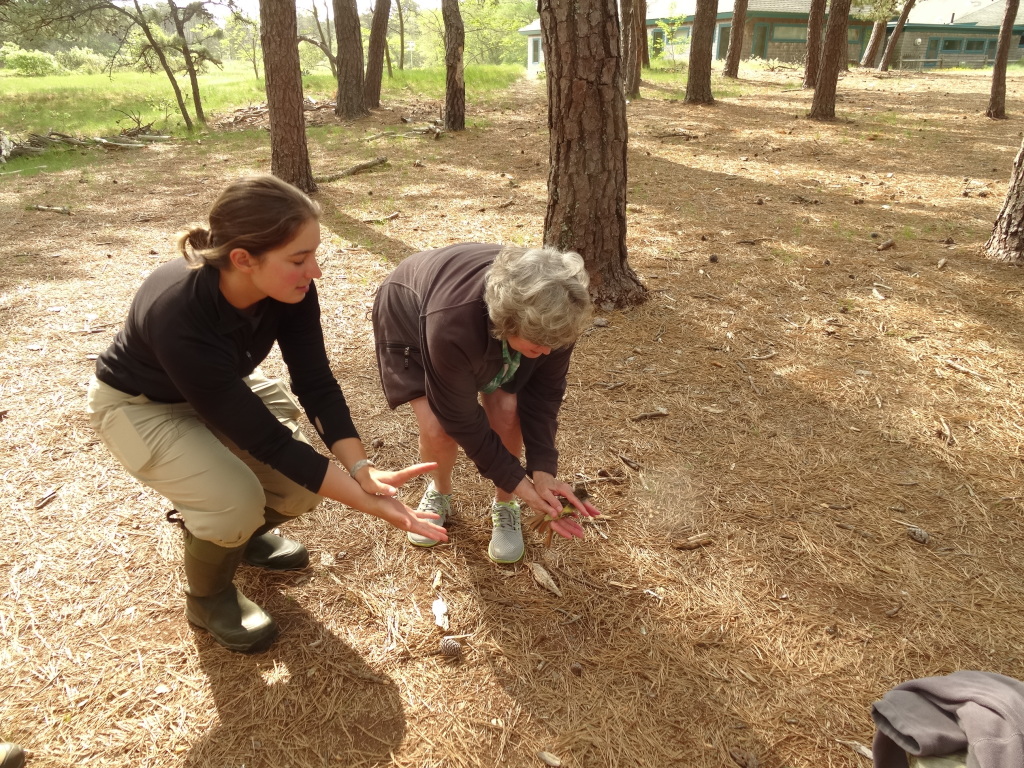 Let’s just say the birds do not hang around after being released. This one actually called and chatted back and forth with what we assumed was a mate almost immediately. All of this takes place in a matter of minutes, by the way. The bird banders are very kind, calm and aware of the bird’s dignity and stress level. I have seen birds banded before but it was a pretty cool way to spend a morning.
Let’s just say the birds do not hang around after being released. This one actually called and chatted back and forth with what we assumed was a mate almost immediately. All of this takes place in a matter of minutes, by the way. The bird banders are very kind, calm and aware of the bird’s dignity and stress level. I have seen birds banded before but it was a pretty cool way to spend a morning.

